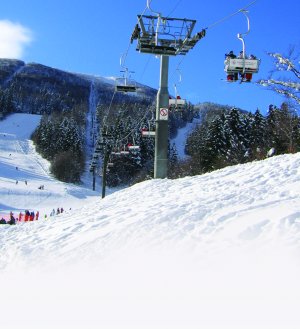 The snow in Oregon is getting greener. Across the state, more ski areas are joining an industrywide push to run their operations using renewable energy.
The snow in Oregon is getting greener. Across the state, more ski areas are joining an industrywide push to run their operations using renewable energy.

The snow in Oregon is getting greener. Across the state, more ski areas are joining an industrywide push to run their operations using renewable energy. But Oregon resorts have gone even further, giving customers the option to buy green energy along with their lift tickets.
In 2003, Mt. Hood Meadows Ski Resort president Dave Riley partnered with Bonneville Environmental Foundation (BEF) to purchase enough renewable energy to power one chairlift. Three seasons later, five Oregon resorts and a total of 20 in the region now run some of their operations on renewable energy.
“The program doubled from last season to this season,” said Patrick Nye, director of sales for BEF. “That’s what Mt. Hood Meadows has helped to influence.”
Mt. Bachelor, Cooper Spur Mountain Resort, Timberline Lodge and Mt. Ashland, a nonprofit resort, also purchase green power. This season, Mt. Ashland became the first resort in the Pacific Northwest to power all of its operations with renewable energy.
But doing the right thing comes at a price. According to Nye, it costs a ski resort about 10% more to buy green energy. Mt. Hood Meadows shells out about $6,000 extra a year to run two lifts. When Mt. Ashland made the jump, the resort paid for the difference between regular and green energy up front: $18,240 to cover the next three years. It was a big chunk of change for the small resort, which gets between 85,000 and 100,000 skier/boarder visits a year, compared to about 590,000 at Mt. Bachelor and about 500,000 at Mt. Hood Meadows.
The ski area has challenged visitors to pay back the resort for that investment through donations and “green” ticket upgrades.
Mt. Bachelor, Mt. Hood Meadows, Cooper Spur and Ski Anthony Lakes have a slightly different program, in which customers can buy Green Tags and Mini-Green Tags. Green Tags are a way of putting more renewable energy into the grid and offsetting the customers’ own greenhouse emissions from driving to and from the mountain.
One $20 Green Tag represents 1,000 kilowatt-hours of renewable energy going into the grid — enough to offset the emissions from about 10 average trips to and from the mountain. A Mini-Green Tag runs $2 and represents 100 kilowatt-hours. The money goes to the BEF, not to the ski area. So far, few ski areas outside Oregon offer Green Tags or a similar option.
“Oregon is leading by example,” says Geraldine Link, director of public policy for the National Ski Areas Association. “I’m trying to get other resorts to do what Oregon is doing.”
— Melissa Bearns
Have an opinion? E-mail [email protected]

